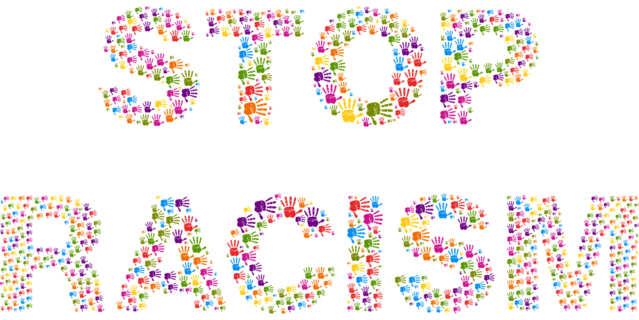Bias
After Charlottesville: Is Racism a Mental Illness?
Charlottesville: Racism has effects on mental health—is it a mental illness?
Posted August 15, 2017

Update 7/24/2020: My 25-minute interview about this subject is on the Pacific Heart Podcast, available for SoundCloud, Apple Podcasts, and Stitcher.
Many across the nation, and indeed, around the world, have been greatly disturbed, saddened and outraged by the incidents in Charlottesville, Virginia on August 11-12, 2017. This country was founded with the genocide of Native Americans and upon Black slavery, both original sins of our democracy. No matter how far we have come in the expression of our ideals, we still have to grapple with outright bigotry and hatred, as well as the more subtle forms of racism that impact vulnerable populations on a daily basis, in tangible and undeniable ways, through physical and mental health, education, economics, the justice system, law enforcement and all other ways we construct ourselves as individuals and a society. I have great hope that the majority of us share the transcendent ideals of inclusion and creating a culture of belonging. However, these ideals are under threat, especially when we aren’t actively promoting them through our words, actions and institutions.
Clearly, and as supported by empirical research, racism has mental and physical health effects on its victims. But are people who harbor racist views themselves suffering from a mental illness? Does racism have mental health effects on its perpetrators? Or can racism be a downstream effect of a mental illness? If so, then how might this impact how we view and treat those with avowed racist beliefs as well as those who harbor less-conscious forms of racism?
A case can be made that those who harbor racist beliefs are in fact exhibiting mental health problems, beginning with self-centeredness and lack of empathy, and continuing to anxiety and paranoia about other racial groups, and culminating in hatred, hostility and sociopathy. This implies that mental health-based programs, including psychoeducation, benign and productive relational contact between races (exposure), treatment of racial anxiety and perceptions of personal insecurity and vulnerability, and the cultivation of compassion and empathy, can be helpful in undercutting the elements of racism still existing in society. This should of course be combined with the political and social program of making it clear that racial hostility and bias are unacceptable at any level of society.
I think racism is best seen as an outgrowth of self-centeredness, which leads to fear, anxiety and paranoia about other racial groups; cognitive and emotional difficulties in processing interactions with other races; hostility and hostile actions towards other racial groups; and devaluations of racial groups based on the incorrect assumption of the superiority of one’s own racial group. People can develop complexes about race, meaning a set of automatic emotions, thoughts and behaviors triggered when encountering another racial group, which tend to shut down openness, friendliness and flexibility. (In the American context, I’m speaking specifically of White supremacy and white majority racism against racial minorities.) From a Buddhist perspective, self-centeredness is the fundamental delusion causing suffering. From self-centeredness springs greed, hatred and jealousy, all to protect and defend the self against others.
The racist believes that their group is superior to others, and therefore devalues other groups. Since racial superiority has been debunked thoroughly in science (see Stephen Jay Gould’s Mismeasure of Man for example *** UPDATED - a reader alerted me to the controversy about this book, see comments; still, the point stands), belief in racial superiority is factually incorrect. Any differences between races are properly seen as cultural relics – our differences are primarily nurture, and rooted in profoundly different environments and opportunities individuals can experience. But when some individuals feel insecure or threatened, they need to claim superiority and power in order to feel better about themselves, and thus latch onto these beliefs of superiority. So racist beliefs can be a response to one’s own insecurity and ignorance about other racial groups and our common biological heritage.
We all have some level of insecurity, misunderstanding, anxiety and sometimes mistrust of other human beings. At some point or another, we all worry about acceptance and belonging, and whether another person or group has positive, negative, or neutral intentions towards us. Until we are either reassured by interactions, or through previous interactions and understandings have developed our own sense of safety and security, we might have a level of ignorance about others, and anxiety. When we feel vulnerable, our fear and mistrust of others rises. So racist beliefs and actions can spring from a pathological level of anxiety or paranoia about other racial groups. They could also rebound from perceptions of rejection by other groups. (See my blog.post on the rejection complex.)
Self-centeredness results in cognitive, emotional and relational deficits. Relationally, self-centeredness devalues others. Emotionally, self-centeredness involves a lack of empathy for others, and resultant hostility. In the extreme case, a lack of empathy underlies sociopathic behavior causing actual harm to others. On a more subtle level, empathic failure underlies nearly all our wounds, of racism, sexism, homophobia, and so forth. Self-centeredness, anxiety and paranoia give rise to cognitive distortions. The individual with racist beliefs interprets the world in such a way as to support their ideology, and thus their own insecure self. The insecure self might feel more powerful to be united with others who share similar beliefs, a reinforcing and radicalizing spiral of groupthink.
Moreover, individuals who are suffering from personality disorders, psychoses, mood disorders, or cognitive dysfunction can exhibit racist beliefs or behavior as a consequence of their cognitive, emotional or relational problems. (Of course, most people with mental health issues do not exhibit racism as a product of their illness. Receiving racism does result in mental health issues, as noted above.)
In all these ways, we see how racism can be a symptom of underlying mental health issues and a mental health issue in itself. Dr. Carl Bell analyzed these issues in several seminal articles, a few of which are referenced below. In addition, Drs. Bell and Dunbar proposed criteria for pathological bias, which are appended below. Personality disorders such as narcissism and antisocial personality, as well as other mental health conditions, might result in racist beliefs and actions. (Some have wondered whether classifying racism as a mental health issue might allow violent perpetrators to plead ‘not guilty by reason of insanity.’ This is a possibility, but this would also require them to identify as racists, and therefore they should be subject to corrective treatments.)
Buddhist teacher Jack Kornfield has said that “until we are enlightened, we are all at least a little mentally ill.” Since enlightenment is the transcendence of self-centeredness and the delusion of a separate and inherently existing self, I think this means we are all at least a little mentally ill until we are really related, until we all feel we belong and have a feeling of society. Racism, and all forms of hatred, are threats to mental health. Racism is not simply a moral, spiritual, cultural and legal issue, it is also an issue with profound implications for mental health, for all affected. As I say in my upcoming book Facebuddha: Transcendence in the Age of Social Networks, “let’s get well soon.”
My book on the psychology of social networks through a Buddhist lens will be published in the fall. Facebuddha: Transcendence in the Age of Social Networks is a combination of memoir, cultural analysis, exploration of psychological research, and introduction to Buddhism. Information and a newsletter at www.facebuddha.co.
(c) 2017, Ravi Chandra, M.D. D.F.A.P.A.
Occasional Newsletter to find out about soon to be released book (Facebuddha: Transcendence in the Age of Social Networks) www.RaviChandraMD.com
Newsletter for my compassion and self-compassion groups, coming in 2018: www.sflovedojo.org
Private Practice: www.sfpsychiatry.com
Twitter: @going2peace
Facebook: Ravi Chandra, Psychiatrist and Writer
Proposed Diagnostic Criteria for Pathological Bias (From Bell and Dunbar, referenced below.)
1. Cautionary statement
A. Pervasive pattern emergent by early adulthood and present in a variety of contexts, as indicated by one or more of the following:
i. Intrusive ideation concerning outgroup persons
ii. Aversive arousal concerning outgroup ideation and intergroup contact
iii. Relational disturbance of intergroup contact
AND
B. The presence during the past 6 months of three or more of the following:
i. Generalized fear or perceived threat of outgroup persons
ii. Hostility or rage response toward outgroup persons
iii. Expressed victimization by outgroup persons without corroborating evidence of actual harm/ victimization
iv. Aversive ideation or fearful preoccupation concerning outgroup persons
v. Expressed victimization by outgroup persons with corroborating evidence of actual harm done
vi. Emotional lability marked by transient hostility secondary to benign intergroup contact
vii. Marked aversive preoccupation with outgroup persons
viii. Panic and anxiety secondary to benign contact experiences with outgroup persons
ix. Endorsement of beliefs and values promoting intergroup hostility and conflict
x. Endorsement of violence as a solution to intergroup problems
xi. Panic and anxiety secondary to benign contact experiences with outgroup persons
xii. Interpersonal provocation of outgroup persons secondary to benign contact experiences
xiii. Reported avoidance of or retreat from outgroup persons secondary to benign contact
C. Criteria for each mental disorder are offered as guidelines for making diagnoses, because it has been demonstrated that the use of such criteria enhances agreement among clinicians and investigators. The proper use of these criteria requires specialized clinical training that provides both a body of knowledge and clinical skills.
D. These diagnostic criteria of pathological bias reflect current formulations of evolving knowledge in our field. They do not encompass, however, all the conditions for which people may be treated or that may be appropriate topics for research efforts.
E. The purpose of this diagnostic model is to provide clear descriptions of diagnostic categories in order to enable clinicians and investigators to diagnose, communicate about, study, and treat people with various mental disorders. It is to be understood that inclusion here, for clinical and research purposes, of a diagnostic category such as pathological bias does not imply that the condition meets legal or other nonmedical criteria for what constitutes mental disease, mental disorder, or mental disability.
F. The clinical and scientific considerations involved in categorization of these conditions as mental disorders may not be wholly relevant to legal judgments, for example, that take into account such issues as environmental stressors (e.g., civil unrest or warfare), cultural norms, disability determination, and legal competency.
(c) 2017 Ravi Chandra, M.D., D.F.A.P.A.
References
Bell CC. Race and America’s Future. Clinical Psychiatry News. August 2, 2016.
Bell CC, Dunbar E. Racism and Pathological Bias as a Co-Occurring Problem in Diagnosis and Assessment, in The Oxford Handbook of Personality Disorders. 2012.
Bell CC. Racism: a symptom of the narcissistic personality disorder. J Natl Med Assoc. 1980 Jul;72(7):661-5
Bell CC. Racism, Narcissism, and Integrity. J Natl Med Assoc. 1978 Feb; 70(2): 89–92.
Gould SJ. The Mismeasure of Man. W.W. Norton, 1981.




